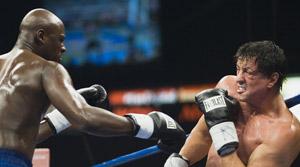
Tulad ng Dati (Mike Sandejas, 2006)
English Title: Just Like Before
Michael Sandejas' initial directorial effort Tulad ng Dati (Just Like Before) is an imperfect film. It is ridden with conventional tropes: the selective amnesia background, the girls and drugs mixture of your typical rock and roll flick, the final face-off between two rival bands (the rival band is of course, cardboard cut-outs of annoying faux-musicians), the life-altering dream sequences segueing to the main character's metanoia. It has uneven pacing: it drags a lot when it wallows in tear-jerking drama, it suddenly paces a lot better when the band starts performing their familiar songs.
It's not a film that is not supposed to work. It is overtly sentimental, unabashedly melodramatic, and incongruent in its technical aspects. However, you are drawn to the film like a metal bearing to a magnet. In its narrative's delightful simplicity, you find what could be the greatest cinematic ode to a Filipino rock icon. In Sandejas' sincerity and unembarrassed fanaticism springs a low-budget concert film that works like a miracle.
The Dawn is a band that started in 1985, performing New Wave music to crowds of adoring fans. In 1988, guitarist Teddy Diaz was killed in a hold-up incident. The band managed to live through the tragedy until 1995 when it abruptly disbanded. In 2000, The Dawn reappeared to the delight of many Filipino fans, and just recently released their latest album also entitled "Tulad ng Dati." What's fascinating about The Dawn is that the band always itself updated with the times. If you examine their entire discography, you can probably surmise the moods and changes in the local music scene; from the comforts of new wave rhythm, to the angst of alternative rock, and the emotional heights of sentimental pop. Moreover, aside from the outward indications of their work, The Dawn's music signifies the years of worries, troubles, and angst that is survived by its members.
Sandejas takes his cue from the richness of his material. He plunges the present members of the band into what lead singer Jett Pangan calls the twilight zone when he becomes afflicted with a curious type of amnesia that only allows him to remember up to 1988. That means he is not aware that he's already married, that his band has survived through highs and lows, that the entire culture of music-listening has changed, and that fantastic guitarist Teddy Diaz has died.
What happens after is a lot less grand than what is expected. Sandejas' screenplay doesn't entreat us to bigger prospects or philosophical musings. Instead, he keeps his material as pedestrian as possible, which I completely understand. The film is after all a tribute film; Sandejas works with a formula. There's a conventional quality to his filmmaking, which is quite surprising since almost every so-called indie filmmaker are always bent on outdoing each other with style and technique. There are no surprising edits, no unique camera angles. The film actually plays like a string of music videos tied together by Sandejas' convenient narrative. Except for the effectively nightmarish production design of Jett's dream sequence with Teddy Diaz (Ping Medina), the film looks rather drab and simple. Acting can be a problem too, especially from the members of the band, who aside from some magical moments, merely recite their dialogues out of mere convenience. Pangan and drummer JB Leonor seem to be the best among the non-professional actors. Medina, Mylene Dizon (who plays Pangan's ex-girlfriend) and Agot Isidro (who plays Pangan's wife) lend professional creds to the cast.


















.jpg)
